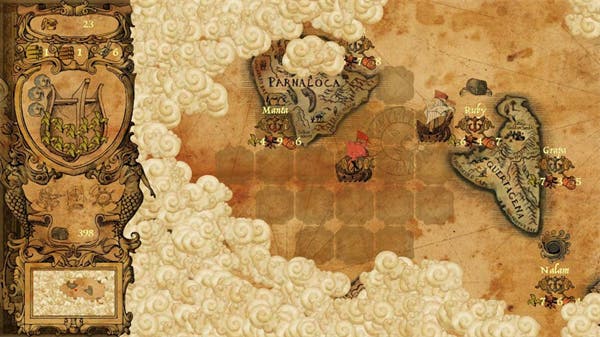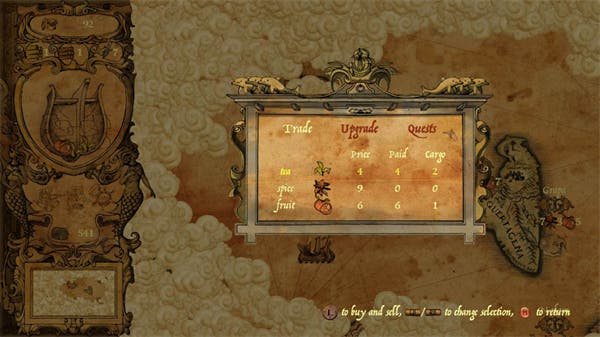Ancient Trader
Breaking the waves.
The average title on Xbox Live's Indie Games service stays on the 15-strong New Arrivals list for all of 10 days - if it's lucky - before it's forced to give way to a clutch of new releases, commonly involving Avatars, with most of a fairly low quality. It's an extremely short shelf-life, only ever extended should it sell enough copies to make the Top Downloads list, or be scored highly enough by its players to earn a spot among the coveted Top Rated selection. Why Ancient Trader should sit on an identical star rating to, say, The Impossible Avatar Getaway 2 is hard to fathom, because this terrific turn-based strategy certainly doesn't deserve to float among the flotsam in the Browse All section.
Its distinctive visual style is, naturally, the first thing that impresses. Artist Petr Vcelka, one of just six names listed in the credits, has taken inspiration from 16th- and 17th-century cartography - most obviously, Abraham Ortelius and his Theatrum Orbis Terrarum (the first modern atlas) - and crafted some beautiful, imaginative and exceptionally detailed art across the game's ageing, weathered maps.

The creatures that you'll battle as you flit from port to port are all hugely characterful creations, ranging from oversized crustaceans to bizarre leviathans of the deep. Subtle animations bring them all to life and as you cross the oceans, you'll see dolphins leaping out of the water, whales briefly surfacing for air and clouds gently circling over unexplored areas. Upgrade your ship and it gradually transforms from a single-sail skiff to an almighty galleon with golden leonine figurehead.
It's decorative, then, but never at the expense of functionality or clarity. Information is clearly presented, and charmingly so. Your current movement limit is represented by huffing wind clouds behind your sail, while icons indicating the three commodities of tea, spice and fruit are piled up neatly in your ship's hold. Everything's laid out so logically and accessibly that you can happily skip the 'How To Play' section and figure out what's going on within minutes of your first game.

The ultimate objective - at least, in the default game mode - is to collect three sacred artefacts so that you can tackle the Ancient Guardian, a monster so huge and fearsome its name warrants capitalisation. Naturally, even if you can afford the items in question, your ship will be woefully underequipped to take on such a behemoth, so you trade and upgrade your way to success. Buy cheap, sell for a hefty profit, and hope you don't bump into any sea monsters or your trading peers as you sail between los puertos (the game quite rightly insists on the Spanish term; it sounds that bit more exciting than its English equivalent).
If your boat is moored, you're safe, but finish a turn on the ocean wave and you might come under attack, at which point you play a simple card game to find out whether or not you lose money to a rival or cargo to the hungry mouth of a sea beast. The highest-numbered card will win each round, unless it's drawn against a colour it's weaker than; the stronger hue gets a two-point attack bonus.

